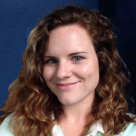Saturday will mark 10 years of Orange Shirt Day and three years since National Day for Truth and Reconciliation was formally recognized as a statutory holiday in Canada.

In London, the Atlohsa and Deshkan Ziibiing community groups host an afternoon event and evening fundraising concert to mark the day at the Western Fair District’s Agriplex.
Beginning at noon, the event will include a story presentation of Orange Shirt Day, a drum group acknowledgment, a jingle dress healing dance and more. The event is scheduled to wrap at 3:30 p.m.
Doors open at 5 p.m. for the concert, which is expected to begin at 6 p.m. Proceeds will go toward “saving the remaining structure of the Mount Elgin Indian Industrial School barn, where children inscribed messages on the walls and foundation, to create a Mount Elgin Museum and Interpretive Centre.”
While it is important to take the day to reflect, Atlhosa housing and healing services director Andrea Jibb said the organization is looking to hold events throughout the year.
“I think our goal is for those discussions to continue happening,” Gibb said. “We’re now spreading the events out over the calendar year… so people can look for events throughout the year that are helping to raise awareness and discussion around some of the issues affecting Indigenous people.”
Gibb added that Atlohsa also has a section on its website where people can further educate themselves called Truth Comes Before Reconciliation.
“People can kind of scroll through and check out some of the different questions for how to engage with the Indigenous community, or if people have questions about various things, such as what is a powwow? What is smudging? What is it like to come to these events? What can someone expect? Because ultimately building relationships is, I think, very key to truth and reconciliation.”
Joel Abram, Grand Chief of the Association of Iroquois and Allied Indians, says reflecting on the root causes that led to things like residential schools and the ’60s scoop, such as racism and discrimination, is key to making sure history does not repeat itself.
“Residential school did not happen in the vacuum, as we know.”
He also touched on some of the longstanding cultural impacts, including the loss of language.
“For instance, my own language, Oneida language, we probably have a little less than 50 fluent speakers that grew up speaking as their primary language. So we have a lot of people that are learning now as a secondary language,” he said.
“I think there’s some scientific evidence that trauma can be passed on through DNA as well, so there still needs to be a lot of healing done in First Nation Indigenous communities.”
More than 150,000 First Nations, Inuit and Métis children from across the country were forced to attend residential schools.
The Truth and Reconciliation Commission that investigated the residential school system and its legacy estimated around 6,000 Indigenous children died at the federally funded institutions. The National Centre for Truth and Reconciliation maintains a student memorial register with more than 4,000 names. Many experts believe the actual number to be much higher.
With files from Global News’ Amy Simon, Haley Lewis and Sawyer Bogdan as well as The Canadian Press’ Stephanie Taylor




Comments